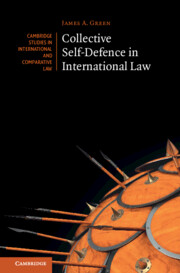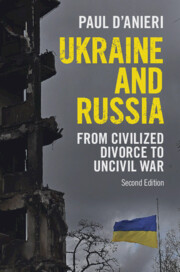96 results
8 - Knowledge Guardians in Informal Networks
- from Part III - Informality within Institutions
-
-
- Book:
- Informal Governance in World Politics
- Published online:
- 23 May 2024
- Print publication:
- 30 May 2024, pp 188-212
-
- Chapter
- Export citation
7 - Australia and Europe
-
-
- Book:
- Australia in World Affairs 2006–2010
- Published online:
- 04 May 2024, pp 96-111
-
- Chapter
- Export citation
5 - Australia’s Defence Policies in the Post–Cold War Era
-
-
- Book:
- Australia in World Affairs 1991–1995
- Published online:
- 04 May 2024, pp 44-55
-
- Chapter
- Export citation
3 - The UN Security Council: Between Centralism and Regionalism
-
-
- Book:
- The UN Security Council and the Maintenance of Peace in a Changing World
- Published online:
- 15 February 2024
- Print publication:
- 22 February 2024, pp 186-277
-
- Chapter
-
- You have access
- Open access
- HTML
- Export citation
4 - Sub-systemic Collective State Actors and the Obligation to Securitize
-
- Book:
- The Duty to Secure
- Published online:
- 15 February 2024
- Print publication:
- 22 February 2024, pp 148-175
-
- Chapter
- Export citation
1 - Delineating Collective Self-Defence
-
- Book:
- Collective Self-Defence in International Law
- Published online:
- 04 January 2024
- Print publication:
- 25 January 2024, pp 23-65
-
- Chapter
- Export citation
7 - Collective Self-Defence Treaty Arrangements
-
- Book:
- Collective Self-Defence in International Law
- Published online:
- 04 January 2024
- Print publication:
- 25 January 2024, pp 232-275
-
- Chapter
- Export citation

Collective Self-Defence in International Law
-
- Published online:
- 04 January 2024
- Print publication:
- 25 January 2024
Threats and the Public Constraint on Military Spending
-
- Journal:
- British Journal of Political Science , First View
- Published online by Cambridge University Press:
- 08 November 2023, pp. 1-18
-
- Article
-
- You have access
- Open access
- HTML
- Export citation
6 - Changing Foreign Policy Directions
- from Part I - Values and Policies in American Foreign Affairs
-
- Book:
- American Foreign Policy and Process
- Published online:
- 19 October 2023
- Print publication:
- 02 November 2023, pp 227-286
-
- Chapter
- Export citation
Chapter 10 - Lyndon Johnson and the Shifting Global Order
-
-
- Book:
- LBJ's America
- Published online:
- 19 October 2023
- Print publication:
- 19 October 2023, pp 254-280
-
- Chapter
- Export citation
6 - The Most Deadly Year
-
- Book:
- Uncivil War
- Published online:
- 03 August 2023
- Print publication:
- 05 October 2023, pp 163-203
-
- Chapter
- Export citation
8 - We Cannot Envisage Peace
-
- Book:
- Uncivil War
- Published online:
- 03 August 2023
- Print publication:
- 05 October 2023, pp 247-270
-
- Chapter
- Export citation

Ukraine and Russia
- From Civilized Divorce to Uncivil War
-
- Published online:
- 13 April 2023
- Print publication:
- 23 March 2023
5 - Clarence Streit, the Atlantic Union Committee, and Postwar Atlanticism
-
- Book:
- Clarence Streit and Twentieth-Century American Internationalism
- Published online:
- 16 March 2023
- Print publication:
- 23 March 2023, pp 169-208
-
- Chapter
- Export citation
6 - Viktor Yanukovych and the Path to Confrontation, 2010–2013
-
- Book:
- Ukraine and Russia
- Published online:
- 13 April 2023
- Print publication:
- 23 March 2023, pp 170-203
-
- Chapter
- Export citation
9 - War
-
- Book:
- Ukraine and Russia
- Published online:
- 13 April 2023
- Print publication:
- 23 March 2023, pp 272-307
-
- Chapter
- Export citation
10 - Conclusion: From Cold War to Hot War
-
- Book:
- Ukraine and Russia
- Published online:
- 13 April 2023
- Print publication:
- 23 March 2023, pp 308-332
-
- Chapter
- Export citation
4 - Autocracy and Revolution, 1999–2004
-
- Book:
- Ukraine and Russia
- Published online:
- 13 April 2023
- Print publication:
- 23 March 2023, pp 102-134
-
- Chapter
- Export citation
5 - Reform and Reversal, 2004–2010
-
- Book:
- Ukraine and Russia
- Published online:
- 13 April 2023
- Print publication:
- 23 March 2023, pp 135-169
-
- Chapter
- Export citation



